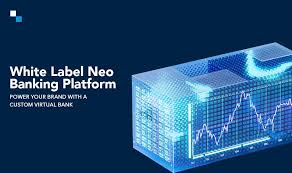
We live in an era of information where nothing is more powerful than data. If you know how to interpret data, you are already ahead of the competition. This is where data visualization comes into play.
Its data representation uses visuals and graphics like charts, maps, graphs, plots, infographics, bubble clouds, mekko charts, scatter plots, animation, etc.
Data visualization is gaining traction among businesses because the visual display of data helps to communicate complex data simply and understandably. Its main goal is to identify patterns and trends within large datasets.
The data undergoes processing, and immersive, interactive visualizations present it in real time. The abundance of data makes real-time analytics necessary for businesses across all industries, including banking and finance.
The banking and financial sector is undergoing a significant digital transformation driven by the need to innovate. If you want to stay ahead of the competition, you must keep up. Leveraging financial data visualization tools offers numerous benefits, such as:
- A comprehensive 360-degree view of changing customer behaviors and needs.
- Timely financial intelligence for informed decision-making.
- Better client reporting.
- Effective fraud detection and risk mitigation.
- A unified view of risk across the organization.
In other words, data visualization enables the banking and finance sector to organize, manage, and process large volumes of data seamlessly, providing real-time insights and supporting strategic initiatives in an increasingly digital world. In the following section, we will explore some well-used cases.
Importance of data visualization in the Banking and Finance Sector
Risk reporting & analytics
It can be quite challenging to integrate widespread data to provide a unified view, especially in areas of regulatory reporting for banks. This includes reporting on risks and performance metrics. The primary challenge is to create reports that combine the risk areas pertaining to the banking sectors, such as operational risks, market credit, etc.
Financial data visualization tools are the right choice in such cases because they can consolidate the data from different sources in real time and generate comprehensive reports that provide visual analytics.
Additionally, data analytics can run quality checks across all sources to ensure the accuracy and reliability of the reports.
Client reporting and CRM
When it comes to the banking sector or BFSI, CRM (Customer Relationship Management) and client reports go hand in hand. On the one hand, CRM helps build strong customer relations and enhance reputation. On the other hand, customer reports provide banks and finance companies with a holistic view of the customers.
By incorporating big data and real-time analytics through data visualization, visual reports deliver concise information necessary for informed decision-making and aid in analyzing client spending patterns, among other insights.
Managing liquidity
Banks and financial institutions must manage liquidity. This requires them to have immediate access to aggregated liquidity positions across various currencies, locations, and products. Additionally, it is pivotal to continuously compare financial figures with standard ratios such as the net stable funding ratio (NSFR) and liquidity coverage ratio (LCR) in real time.
Data visualization simplifies these comparisons by offering comprehensive visual reports and risk analysis. Furthermore, integrating data from external sources like ERP systems can enhance the depth of reports, enabling better liquidity prediction and analysis.
Customer analysis
Times have changed, and so have customers. Whenever they choose a service or product, they expect it to be targeted and tailored. This makes it vital for banks and finance sectors to identify the needs, preferences, and behaviors of their respective customer so that they can meet their requirements.
Financial data visualization tools can provide representatives and associates with current and pertinent information, empowering them to make data-driven decisions and offer solutions customized to the customer’s needs. This not only improves customer satisfaction but also boosts the performance of your sales team.
Social media integration
With 4.89 billion social media users worldwide, it has become more convenient for all businesses and industries to market their products and build strong customer relationships. This does not exempt the BFSI industry either.
Social media marketing generates large amounts of data and can be integrated into CRM applications that contain visual dashboards. Data visualization can seamlessly connect different data sources and produce analytics crucial for enhancing marketing and business strategies.
Fast identification
Dealing with data can be tough, especially when a large volume of data is generated every day. Financial data visualization tools can create comprehensive dashboards with graphical representations of datasets.
The best part of this is that it needs no manual intervention, such as applying filters or sorting through rows and columns of data. Teams can quickly create graphs, line charts, heat maps, and bar charts using these tools. They can also identify micro and macro features and various trends.
Data sharing and collaboration
The BFSI is an elaborate industry. Its operations are often widespread across different locations, branches, departments, and divisions. With the right data visualization tools, teams can produce and share reports.
This helps in data exchange and collaboration within teams, whether they are under the same roof or dispersed around the globe. With a combination of robust functionalities and features, banks and financial institutions can collect, analyze, process, and generate reports in real time.
Detection of anomalies and patterns
When it comes to the finance sector, one of the biggest issues is monetary fraud. Financial data visualization tools can generate reports that reflect various trends that can go undetected when processed manually due to the large volume of data.
While removing the risk of financial fraud may not be possible, data visualization can most certainly reduce it. Most financial institutions nowadays have a dedicated dashboard for fraud detection and risk management.
Data visualization is a dynamic tool that can benefit the banking and finance sector when implemented to its full capacity. By leveraging these tools, banks and financial institutions can gain a competitive edge. It’s high time to invest in upgrading and maximizing the utility of data for your organization. Mu Sigma is a trusted ally in this domain. Being one of the largest pure-play data analytics and decision science firms, it boasts robust technology and a satisfied clientele. Explore their data visualization services for more information.
Write and Win: Participate in Creative writing Contest & International Essay Contest and win fabulous prizes.


